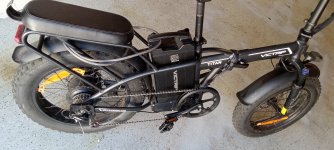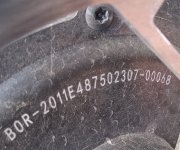Progressive failure is not normally a sensor fault. That usually either is a problem or it is not. Progressive failure is usually a mechanical issue (like gears in a geared hub). Also, hall sensor failure usually causes problems at startup from a stop under load (even if it doesn't during no-load offground testing).
No need to open it to test sensors, you can use the info at ebikes.ca learn troubleshooting hall sensors, or in other hall sensor test threads to verify them.
If you can't leave them connected to the controller with the controller powered on while testing (simplest way, but hard to do on today's common waterproof plugs), you'll need to supply 5v to them (like from an old USB charger you're not using), and have a small resistor (1kohm to 10kohm, can be found in a fair bit of old junk electronics) to connect to the signal wire of the sensor under test and the 5v source to provide a "pullup", since the halls don't output anything, they only ground an existing 5v pullup from the controller on each signal line, or unground that signal, everytime a magnet of the opposite polarity passes them (vs the previous magnet). (so "on" is about 0v, and "off" is about 5v). You'll need a voltmeter, or an LED (also salvagable out of the old electronics, for instance).
If you can post which specific motor you have, and a picture of the disconnected motor-to-controller plugs that shows the pins, we can try to find out if the pin diagram (pinout) for that connector is already known.
There are also "ebike testers" that can be used to verify motor/controller general operation, this is one randomly chosen example from a google search
but they don't usually come with modern connectors on them, so to make it "easy" you have to also get extension cables or "pigtails" to match the connnectors on things you need to test, and then wire them up in place of the connectors the tester comes with.

That's a potentially costly PITA if you only need to do one test on one bike one time.

If pushing the wires on the throttle fixed the problem, it means that there is a broken wire in that cable, and pushing on it reconnected it, but it will not stay that way--eventually it will come loose again. If you pushed it on the throttle side of the throttle-controller connector to make it work, then it's probably broken on the throttle cable, and the throttle would be the part to replace (or repair the cable of). If on the controller side, then the controller.



